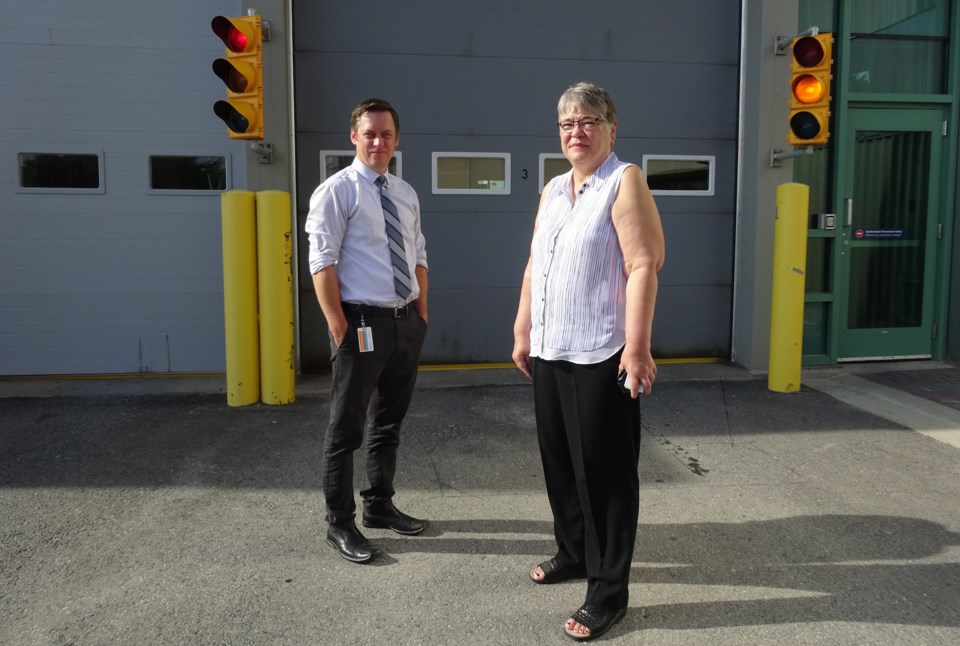NEWS RELEASE
NORTH EAST LOCAL HEALTH
INTEGRATION NETWORK (NE LHIN)
***************************
NE LHIN and partners collaborate on first phase of a new model to transfer non-urgent patients
A patient-focused model to help get Northerners to and from their community hospital for non-urgent health care appointments at larger hospital referral centres will begin in the new year.
“Northerners want better coordinated care especially when they are older and need to travel long distances from their home community hospital to a larger hospital for tests or specialist consults,” says Louise Paquette, CEO, North East Local Health Integration Network (NE LHIN). “After several years of hard work between the NE LHIN and area partners, this new model will help hospitals improve patient flow while getting patients to and from hospital-based medical appointments quickly and safely.”
This made-in-the-North solution addresses a long-standing problem of patients being delayed at larger hospitals as they await a return trip by ambulance to their home community.
Currently, across Northeastern Ontario, virtually all long-distance non-urgent patient transfers are done using ambulances, which often means a return ride isn’t promptly available if the ambulance is called out to respond to an emergency.
The initial routes to be phased in were selected based on a number of factors including the readiness of the area providers.
Starting in early 2017, dedicated multi-patient vehicles will operate to and from both Timmins and District Hospital and Health Sciences North in Sudbury, including:
1. Elliot Lake to Espanola to Sudbury (165 km)
2. Mindemoya to Little Current to Espanola to Sudbury (163 km)
3. Kapuskasing to Smooth Rock Falls to Timmins (166 km)
4. Cochrane to Iroquois Falls to Matheson to Timmins (224 km)
The model is being put in place by the NE LHIN’s Non-Urgent Patient Transportation Leadership Working Group, which has worked to analyze the scope of the challenge, test pilots, and develop a new model.
Next steps will focus on finalizing the plan between the LHIN, participating hospitals and Emergency Medical Services (EMS) ; selecting a transportation service provider; designing and establishing dedicated non-urgent patient waiting areas in Timmins and Sudbury; and setting up the central non-urgent patient transportation dispatch function for the region.
North East Non-Urgent Patient Transportation Leadership Working Group:
• Health Sciences North (Sudbury): Grace St. Jean (Co-Chair)
• NE LHIN: Philip Kilbertus (Co-Chair)
• City of Greater Sudbury EMS (Sudbury): Joseph Nicholls
• Kirkland and District Hospital (Kirkland Lake): Tracy French
• Manitoulin-Sudbury EMS (Espanola): Mike MacIsaac
• MICs Group of Health Services (Matheson, Iroquois Falls, Cochrane): Paul Chatelain
• North Bay Regional Health Centre (North Bay): Jim Stewart
• North Bay Central Ambulance Communications Centre (North Bay): Marc Picard
• Ornge (Thunder Bay): Wade Durham
• St. Joseph’s General Hospital (Elliot Lake): Pierre Ozolins
• Sault Area Hospital (Sault Ste. Marie): Elizabeth Ferguson
• Timmins and District Hospital (Timmins): Guy Guindon
Patient challenges that the new model will address:
• Patients missing tests, or being left at the hospital or other hospitals after their tests for extended periods of time, because EMS ambulances must defer the transfer of non-urgent patients to respond to emergency calls.
• Patients unprepared to stay unexpectedly for long periods – without their prescribed medications, food or hygiene care.
• Patients stranded and having to stay overnight in hallways or the Emergency Department – at times without family members or professional care attendants.
***************************
